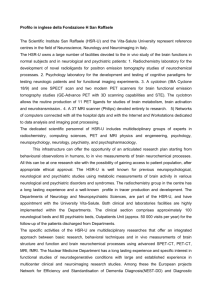yhhn -spect-pet-cki-2012
advertisement
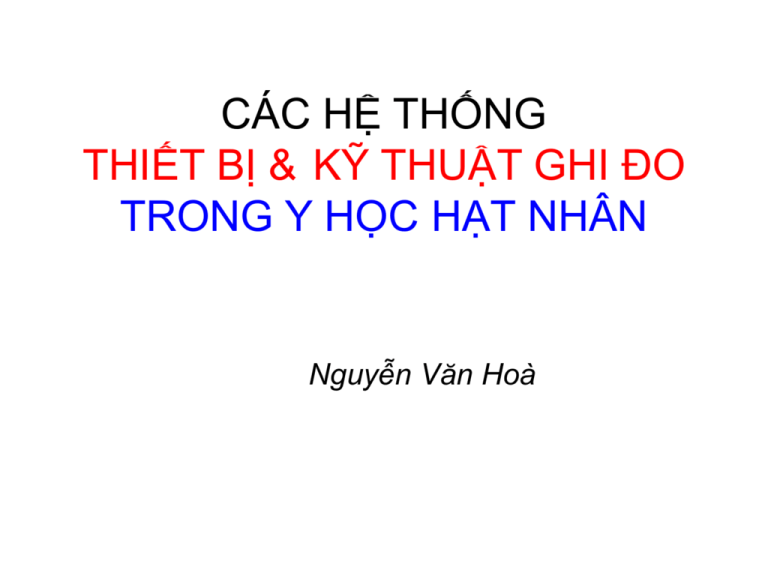
CÁC HỆ THỐNG THIẾT BỊ & KỸ THUẬT GHI ĐO TRONG Y HỌC HẠT NHÂN Nguyễn Văn Hoà NUCLEAR MEDICINE Diagnosis and therapy with unsealed sources Clinical problem Radiopharmaceutical Instrumentation (99Mo 99mTc ) GENERATOR 99mTc Shield eluted 99Mo Column Saline RADIONUCLIDE THERAPY IN CRH NUCLREAR MEDICINE Range of of maximum Energy (Emax) in soft tissue Augers Alphas DÖÔÏC CHAÁT PHOÙNG XAÏ cho SPECT TC99m Pertechnetate Tc99m MIBI Tc99m MIBI Tc99m Phytate Tc99m MDP Tc99m DTPA DMSA Assay of Absolute Activity • Two methods are used for the determination of absolute activity from the counting rate: calibration table and calibration (standard) source • Long-lived radionuclides are used as calibration (“mock”) source: 137Cs for 131I, 129I for 125I and 57Co for 99mTc. • Sample’s absolute activity X is given by X = κA(mock)[R(sample)/R(mock)], where A is mock activity and κ the ratio of emission frequencies Dose Calibrators • Dose calibrators are gas filled ionising chambers. The gas is air and sealed to avoid variations in temperature and atmospheric pressure. • Dose calibrators are used to assay large quantities of activities where it is too large for NaI(Tl) detector (generator, patient preparation, shipment etc). • The activity is determined by measuring the total amount of ionisations in the chamber with no inherent ability of energy discrimination. Dose Calibrator Introduction Pulse height analyzer Pulse height (V) UL LL Time The pulse height analyzer allows only pulses of a certain height (energy) to be counted. counted not counted Pulse-height distribution NaI(Tl) Nuclear Medicine Counting • Nuclear Medicine radionuclide decay counting follows Poisson distribution. • Nuclear Medicine question is that how good is the result N from a single measurement? • The assumption is that Nm so that there is 68.3% chance that m is within the range NN. N is uncertainty in N. • Percentage uncertainty is defined as V= (N/N) x 100%. Counting Systems • • • • Semiconductor systems Liquid Scintillation Detectors Gas-filled detectors In vivo counting systems Coincident Summing • Occurs when a radionuclide emits two or more γ rays from single disintegration. • Prominent in detector system with high geometric efficiency, such as well counter. • Summing also occurs between x and γ rays as well as two 511 KeV annihilation photons Scalers and Timers • A device that only counts pulses is called a scaler • An auxiliary device that controls the scaler counting time is called timer. Counting Rates • If N counts are recorded during time t, then the counting rate is R=N/t. The uncertainty in counting rate is then given by R (1 / t ) N N t 2 Rt And the percentage uncertainty VR=(R/R)100%=100%/Rt Scintillation detector Detector Amplifier Photocathode cathodd Dynodes PHA Anode Scaler Well Counter Automatic Multiple-Sample Systems • Automatic multiple sample systems are necessary for counting large number of samples or repeated tests • The main problem of the multiple sample well counters is the background shielding on top of the wells • SCA, MCA and computers are all being used for the interface with the detectors. Multiple-Sample System Multi-Sample Through-Hole System Automatic Multiple Sample Liquid Scintillation Counters • Automatic multiple sample liquid scintillation counters are designed to handle large amount samples or repeated counting. Multi-Sample Liquid Counter Analog Ratemeters • A analog ratemeter is used to determine the average number of events occurring per unit time. The average is determined continuously rather than over discrete counting time • Linear vs logarithmic ratemeters: V0=knQRp vs V0=klog(nQRp) - wider range of counting rate • Ratemeter responds to the rate change has a time constant which can be adjusted (change the capacitor) NaI(Tl) Probe System THYROID UPTAKE MEASUREMENT In Vivo Counting Systems • In vivo refers to human or animals body • Probe system is designed to detect single organ or localised parts of the body • A typical probe system employs 5x5cm NaI(Tl) cylinder crystal plus cylindrical or conical shaped collimator (as well as PM tube etc). Surgical Gamma Ray Probes Gamma Ray Probe System In Vivo Counting Systems • Whole body counting system is designed to measure total radioactivity of whole body (not local activity). • Most whole body counters employ large NaI(Tl) crystal (15-30cm diam x 5-10 cm thick) in order to detect high energy photons and small activities. PIONEERS B. Cassen H.O. Anger Gamma camera Used to measure the spatial and temporal distribution of a radiopharmaceutical Gamma camera (principle of operation) Position X Position Y Energy Z PM-tubes Detector Collimator GAMMA CAMERA Gamma camera Data acquisition Static Dynamic ECG-gated Wholebody scanning Tomography ECG-gated tomography Wholebody tomography Camera based SPECT systems can be one of the configurations below: Distances vs Positions Step-and-Shot Acquisition Rotational SPECT Camera GAMMA CAMERA SPECT cameras are used to determine the three-dimensional distribution of the radiotracer Acquisition Protocols Various different acquisitions can be performed with a SPECT camera…. 1. 2. 3. 4. Planar Imaging Planar Dynamic Imaging SPECT Imaging Gated SPECT Imaging Cinematic Display • Dynamic sequence of images may be displayed as a continuous- loop movie known as cinematic display. KIDNEY FUNCTION (Tc99mDTPA) It is ideal to mark the background region in such a manner as to exclude the arteries and calycial region. Renogram Ejection Fraction Calculation Segmental Wall Motion Calculation THYROID SCAN BONE SCAN Single probe Scanner Gammacamera Whole Body Imaging Different Intensity BONE SCAN normal pathologic CEREBRAL BLOODFLOW normal Alzheimers disease First Pass Cardiac Studies • Data acquisition technique – List or Frame: 0.5 second per image • Data reformat • Ventricular function evaluation – EF, Ventricle size, wall motion similar to multiple gated studies • Detection of Intra-cardiac shunts – Left to right shunt: Qs=Qp-Qsh; (Qp/Qs)>1.3 – Right to left shunt: some activity goes directly into the left ventricle without first passing through the lung. Gated SPECT Phase Image SHUNT QUANTIFICATION ECG-GATED BLOODPOOL SCANNING MYOCARDIAL PERFUSION TOMOGRAPHIC SLICES coronal sagittal transversal MYOCARDIAL PERFUSION Stress Rest MYOCARDIAL PERFUSION Cinematic Display • The images to be displayed are formatted into an area memory known as buffer so that information can be retrieved quickly. ECG-GATED MYOCARDIAL PERFUSION SPECT/CT TECHNOLOGY & FACILITY DESIGN SPECT / CT Scintillators Density Z (g/cc) • Na(Tl)I 3.67 51 Decay time (ns) 230 Light yield (% NaI) 100 Atten. length (mm) 30 BGO 7.13 75 300 15 11 LSO 7.4 66 47 75 12 GSO 6.7 59 43 22 15 Na(Tl) I works well at 140 keV, and is the most common scintillator used in SPECT cameras SPECT / CT SUMMARY OF SPET/CT • SPECT cameras are scintillation cameras, also called gamma cameras, which image one gamma ray at a time, with optimum detection at 140 KeV, ideal for gamma rays emitted by Tc-99m • SPECT cameras rotate about the patient in order to determine the three-dimensional distribution of radiotracer in the patient • SPECT/CT scanners have a CT scanner immediately adjacent to the SPECT camera, enabling accurate registration of the SPECT scan with the CT scan, enabling attenuation correction of the SPECT scan by the CT scan and anatomical localization of areas of unusually high activity revealed by the SPECT scan PET Positron Emission Tomography Overall data flow during PET acquisition and processing Acquisition Calibration data Sinogram Correction data Counts/ray Reconstruction Image ANNIHILATION 511 keV positron + + 511 keV CYCLOTRONS IN HOSPITALS FDG Module Target Beam extractor Ion Source Magnetic coil Dees PET Radiopharmaceuticals Nuclide Half-life Tracer Application O-15 2 mins Water Cerebral blood flow C-11 20 mins Methionine Tumour protein synthesis N-13 10 mins Ammonia Myocardial blood flow F-18 110 mins FDG Glucose metabolism Ga-68 68 min DOTANOC Neuroendocrine imaging Rb-82 72 secs Rb-82 Myocardial perfusion F18-FDG Manufacture of FDG • End of bombardment of the target material with the ion source beam is only 18F, NOT FDG • Bombardment could typically be 2 hours (one halflife) • 18F then sent to a chemistry module (synthesis module) to react with a number of reagents to produce fluorinated deoxyglucose • Synthesis module performs a number of steps such as heating, cooling, filtering, purifying, etc. • FDG synthesis typically adds another hour Manufacture of 18F • • • • Proton is accelerated Strikes 18O target Merges with 18O Neutron ejected O + p F+ n 18 8 1 1 18 9 1 1 FDG CH2HO O HO OH HO OH glucose CH2HO O HO HO OH 18F 2-deoxy-2-(F-18) fluro-D-glucose • Most widely used PET tracer • Glucose utilization • Taken up avidly by most tumours 18 9 F O + + 18 8 0 1 + • E = mc² • = 9.11 x10-31kg x (3x108)² m/sec • = 8.2 x10-14 J • = 8.2 x10-14 J ÷ (1.6x10-19 J/eV) • = 511 keV Coincidence Detection Detector Detector PET • Positron Emission Tomography • Functional information • Tracers produced in cyclotron • Biological tracers • ‘Hot spot’ on image • Few anatomical landmarks CT • Anatomical detail • Cannot differentiate between active and benign disease • Better resolution than PET • Good dynamic range bone to lung PET/CT CYCLOTRON PET/CT • Combines the functional information with the anatomical detail • Accurate anatomical registration • Higher diagnostic accuracy than PET or CT alone MULTIMODALITY IMAGING PET CT Scan Process 1) CT scout view performed first 2) Full CT performed second 3) Patient moved into scanner and PET scan acquired third biograph LSO standard protocol Fused PET/CT FORE AWOSEM CT PET Upper limit Lower limit Topogram attenuation correction scatter correction CT acquisition XAÏ TRÒ NGOAØI : MAÙY GIA TOÁC (LINAC ) Treatment plan RT planning and response Case: Female with bronchial CA for RTP. pre-treatment Scan protocol: Standard whole-body PET/CT scan pre- and posttherapy. Pre- and post-therapy PET/CT can be registered using manualsyngo-fusion tool. Findings: Evaluate extent of disease prior to RT. RT planning based CT or PET/CT. Evaluate RT response. Data Courtesy ofUniversity Essen (Dr s S Marnitz and S Mueller) post-treatment CT PET CAÁP LIEÀU 188Re-HDD-Lipiodol Kieåm tra baèng DSA Heart 98 6 ABDOMINAL AORTA 1 Aorta Splee n Tieâm Re188 Lieàu Re-188 thaùm saùt (5mCi) Lieàu Re-188 Tieâm lieàu 188Re-HDD-Lipiodol thaùm saùt 5mCi duøng DSA höôùng daãn Maùy DSA Heart 98 6 1 Aorta ABDOMINAL AORTA Splee n Tieâm lieàu Re188 thaùm saùt (5mCi) THUAÄT TOAÙN TÍNH LIEÀU MIRD MIRD phantom Coâng thöùc tính lieàu cô baûn : D(rk) = = ~ Ah Si D i f i (rk rh) Mk ~ Ah S (rk rh) Giaû ñònh : Hình hoïc cô quan ngöôøi chuaån , tröø khoái U. Cô quan nguoàn phaân boá hoaït ñoä ñoàng nhaát. Cô quan bia haáp thuï naêng löôïng ñoàng nhaát. B.2. THUAÄT TOAÙN TÍNH LIEÀU MIRD Lieàu haáp thuï taïi cô quan bia : MIRD phantom D(rk) = = ~ Ah Si D i f i (rk rh) Mk ~ Ah S (rk rh) Beänh nhaân Ngöôøi chuaån SGiaû (rkñònh rh) S (rk rh) Hình hoïc cô quan ngöôøi chuaån , tröø khoái U. Cô quan nguoàn phaân boá hoaït ñoä A.3. NGUOÀN XAÏ Re-188 Naêng löôïng : β-(max) : 2.12 MeV γ : 155 KeV(15%) Khoaûng chaïy trung bình cuûa β : 3.8 - 11 mm Kieåu phaân raõ : β- to 188Osmium Thôøi gian baùn huûy : 17.005 giôø Nhaân meï : 188Tungsten B.6. QUI TRÌNH LAÄP KEÁ HOAÏCH & TÍNH LIEÀU DUNG NAÏP CÖÏC ÑAÏI Re-188 1. CT / MRI chaån ñoaùn, tính theå tích Gan, U gan. 2. LABO pha cheá Re-188 -HDD-Lipiodol vaø ño chuaån lieàu. 3. SPECT chuïp aûnh tính heä soá chuaån, suy giaûm,taùn xaï. 4. DSA höôùng daãn caáp lieàu Re-188 thaùm saùt . 5. SPECT chuïp aûnh phaân boá Re-188 thaùm saùt . 6. MIRD tính phaân boá lieàu haáp thuï trong cô theå. 7. Excel spreadsheet tính lieàu xaï trò dung naïp cöïc ñaïi ñeå lieàu Gan laønh < 30Gy , phoåi < 12 Gy, tuûy xöông <1.5Gy. 8. DSA höôùng daãn caáp lieàu Re-188 xaï trò . B.5. LAÄP KEÁ HOAÏCH & TÍNH LIEÀU DUNG NAÏP CÖÏC ÑAÏI Re-188 THEO THUAÄT TOAÙN MIRD TÍNH LIEÀU Re - 188 XAÏ TRÒ K GAN HCC DOSIMETRY TREATMENT DOSE EXCEL SPREAD SHEET PHARMACEUTICAL PATIENT DATA CT / MRI DSA SPECT DOSE CALCULATION STANDARD ANATOMY DIAGNOSIS SCOUT STANDARD ALGORITHM ( MIRD ) FLOOD MASSES VOLUME TREATMENT FLOOD EXCEL SPREAD SHEET SCOUT WEIGHT FOLLOW UP FPLLOW UP SCOUT DATA INPUT FOLLOW UP TREATMENT DOSE OUTPUT TREATMENT TÍNH LIEÀU HAÁP THUÏ TAÏI BIA Thuaät toaùn tính lieàu MIRD coù hieäu chænh D(Gan laønh ) = D(Gan laønh Gan laønh vôùi U ) D(Gan Phoåi ) * D(Gan Tuûy xöông ) * D(Gan Phaàn coøn laïi cuûa cô theå ) * + + + D(Lung) = D(Phoåi Gan laønh vôùi U ) * D(Phoåi Phoåi ) * D(Phoåi Tuûy xöông ) * D(Phoåi Phaàn coøn laïi cuûa cô theå ) * + + + D(Red Marrow) = D(Tuûy xöông Gan laønh vôùi U ) * D(Tuûy xöông Lung) * D(Tuûy xöông Tuûy xöông ) * D(Tuûy xöông Phaàn coøn laïi cuûa cô theå ) * + + + * Duøng caùc heä soá S ñieàu chænh theo khoái löôïng XAÏ HÌNH SPECT Aûnh toaøn thaân Ghi hình nguoàn chuaån Ghi hình nguoàn Re-188 trong Phantom phaúng truyeàn qua beänh nhaân Re-188 Detector Nguoàn chuaån Re188 Detector Beänh nhaân Re-188 lieàu thaùm saùt 5 mCi Aûnh Gan vôùi 99mTc-Phytate vaø aûnh U gan vôùi ATTENUATION Re-188 lieàu thaùm saùt 5 mCi . Aûnh Aûnh nguoàn chuaån nguoàn chuaån Re-188 Aûnh Phantom nguoàn phaúng Gan Aûnh u gan Aûnh truyeàn qua Phoåi ,Gan C.6. TÍNH LIEÀU XAÏ TRÒ BAÈNG EXCEL SPREADSHEET THEO THUAÄT TOAÙN MIRD
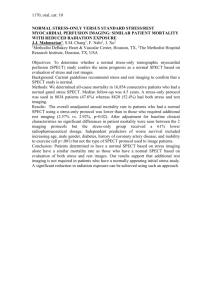

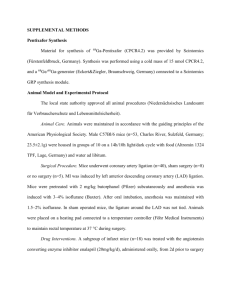
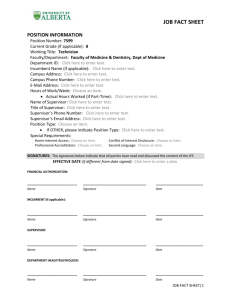
![Structural and electronic properties of GaN [001] nanowires by using](http://s3.studylib.net/store/data/007592263_2-097e6f635887ae5b303613d8f900ab21-300x300.png)

